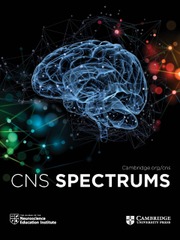Article contents
Shame and Psychopathology
Published online by Cambridge University Press: 07 November 2014
Abstract
The origins of the word “shame” recall the concept of the infraction of integrity both as scandal and as individualization. The human experience of shame stretches along a continuum from modesty to disabling interpersonal terror. Unlike other basic affects, its emergence is a fundamental moment in the process of self-awareness and self-object differentiation. Neglected by psychiatry because it was regarded as a moral concept, today it is possible to hypothesize that it has a biologic basis that one can attempt to describe in terms of corticothalamic pathways. In this respect, like other affects, it could be considered as a cognitive shortcut to activate specific and evolutionally useful behavioral patterns, such as concealment or a request for affiliation. It is fairly ubiquitous in psychopathology, but is clinically much more structured in its abnormal expressions in anxiety disorders, particularly social phobia, obsessive-compulsive disorder, eating disorders, body dysmorphic disorder, and even in bipolar mood disorder. In schizophrenia it has been described as being one stage in the construction of delusion. Its presence is connected to interpersonal relationship (altruism) though it seems absent in autism. The assessment of shame experiences in psychiatric patients could be useful for both pharmacological and psychotherapeutic strategies, and could provide a categorization of a new psychopathology based on abnormal affects.
- Type
- Feature Articles
- Information
- CNS Spectrums , Volume 5 , Issue 8: Neuroscientific Approach to Emotions and Feelings: The Last Frontier of the New Millennium , August 2000 , pp. 28 - 43
- Copyright
- Copyright © Cambridge University Press 2000
References
REFERENCES
- 10
- Cited by


